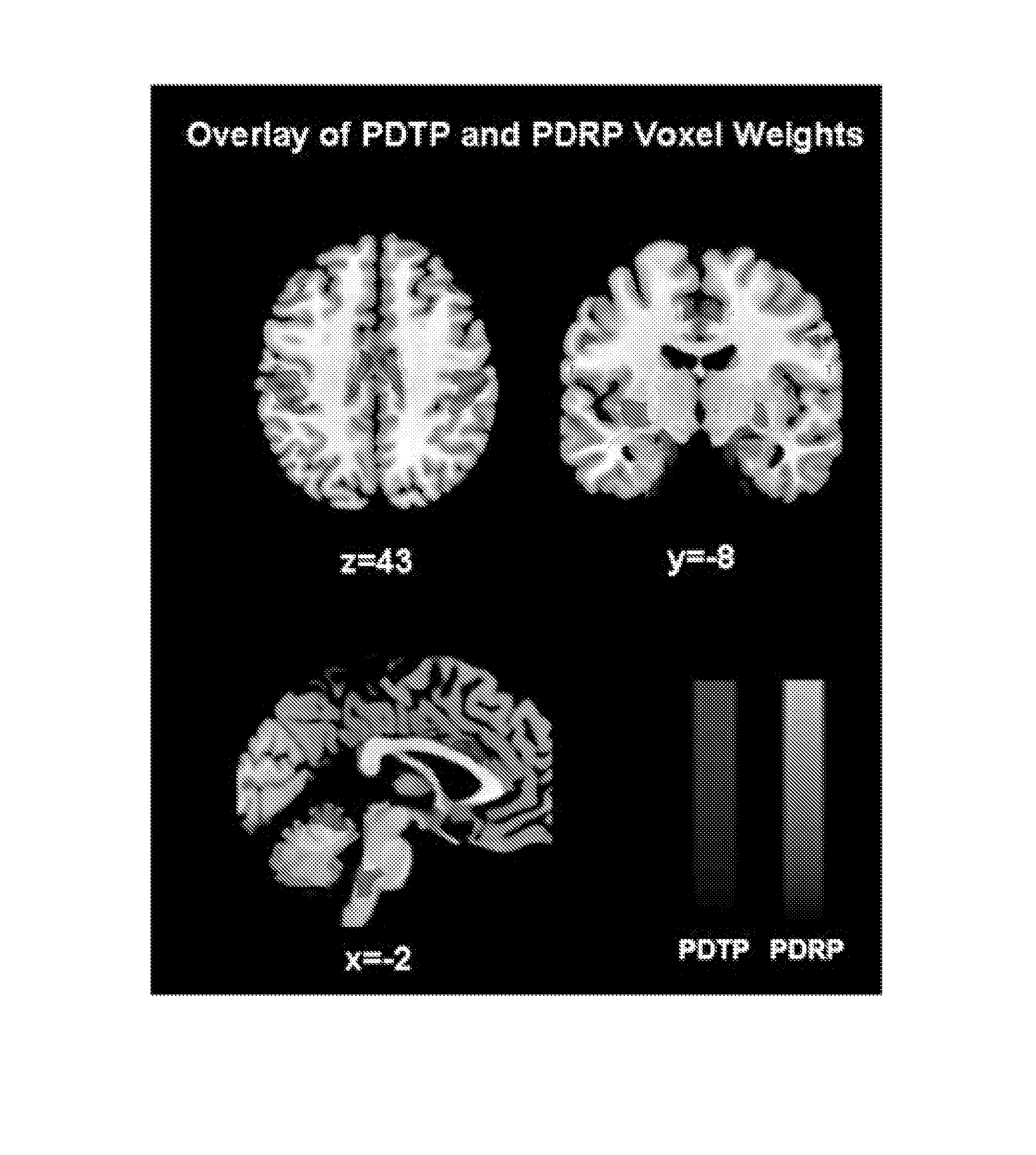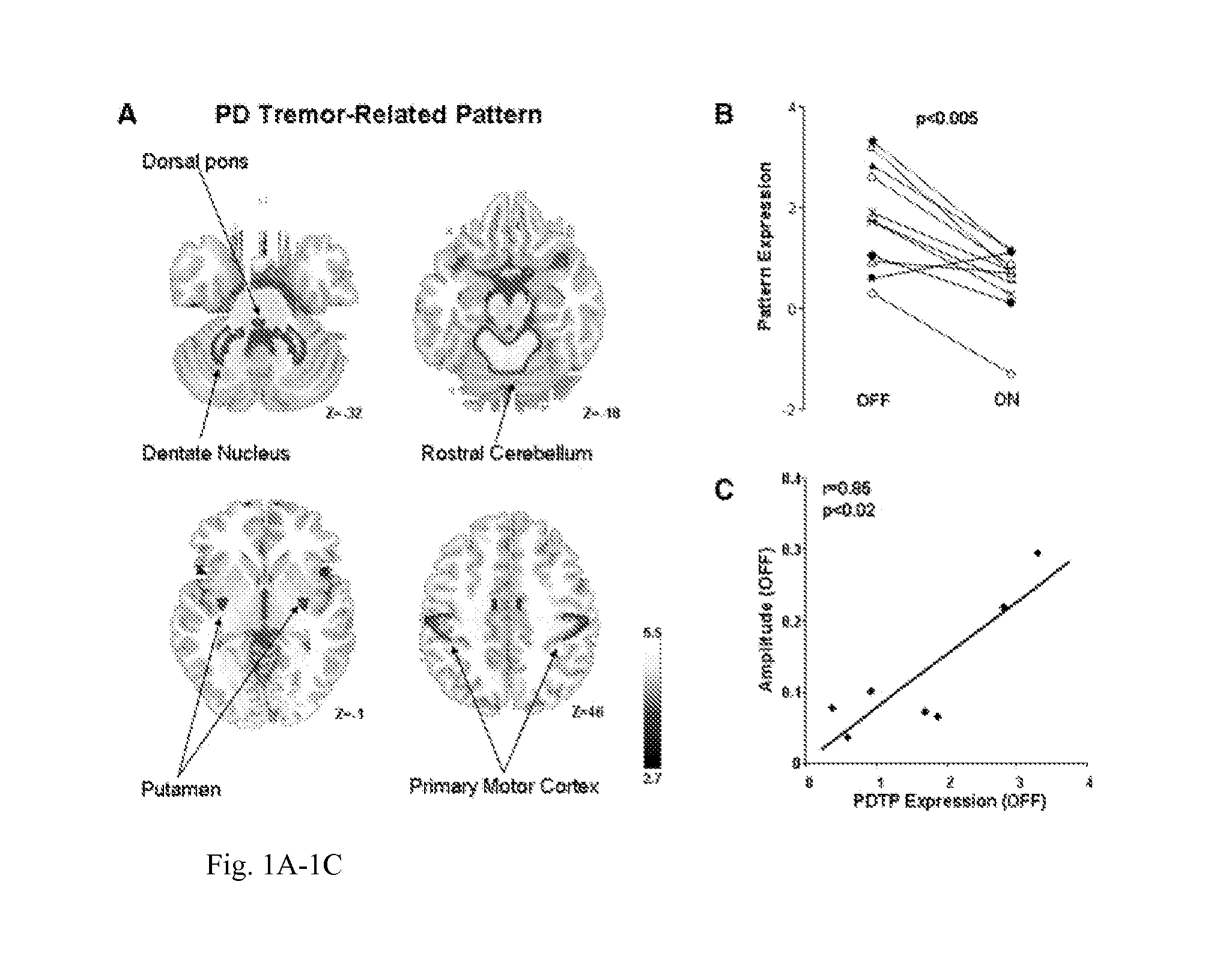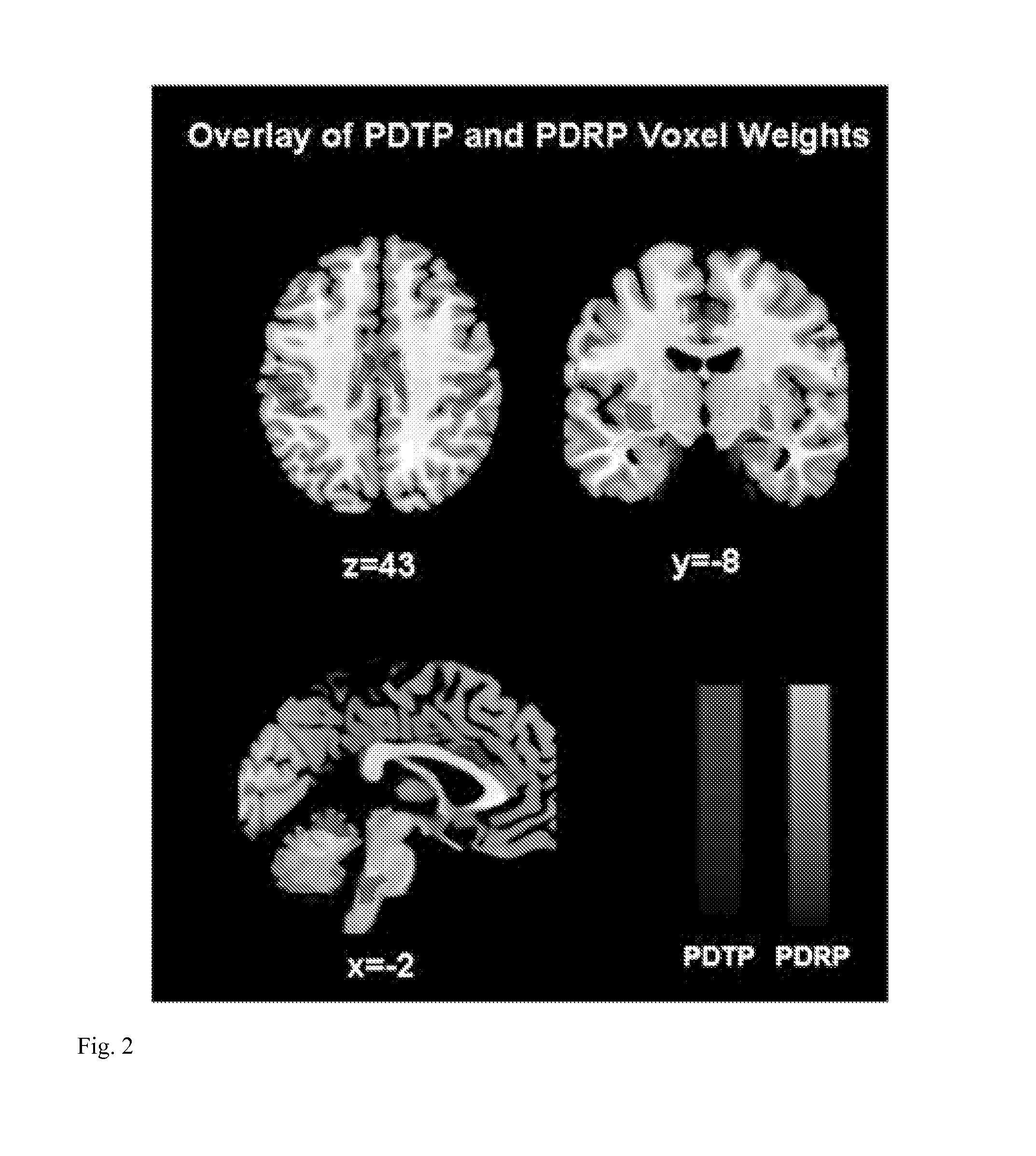Identification and uses of brain activity networks
a brain activity network and brain activity technology, applied in the field of identification and use of brain activity networks, can solve the problems of limited methods and inability to identify treatment-specific (versus disease-specific) network changes
- Summary
- Abstract
- Description
- Claims
- Application Information
AI Technical Summary
Benefits of technology
Problems solved by technology
Method used
Image
Examples
Embodiment Construction
Abbreviations
[0031]AIC—Akaike information criterion
DBS—deep brain stimulation (DBS)
FDG—18F-fluorodeoxyglucose (FDG)
[0032]HD—Huntingdon's disease
HDPP—Huntingdon's disease progression pattern
MRI—magnetic resonance imaging
OrT / CVA—Ordinal Trends Canonical Variates Analysis
[0033]PC—principal component
PCA—principal component analysis
PD—Parkinson's disease
PDRP—PD-related metabolic covariance pattern (PDRP)
PDTP—PD tremor-related metabolic pattern (PDTP)
PET—positron emission tomography (PET)
RMANOVA—one-way repeated measure analysis of variance
UPDRS—Unified Parkinson's Disease Rating Scale (UPDRS)
[0034]Vim—ventral intermediate (Vim)
[0035]As used herein, a “candidate treatment” is any treatment or therapy, including in non-limiting examples a candidate drug, dosing regimen, dosage form, or administration technique, and which is selected for testing as to its efficacy in treating or ameliorating a disease, disorder or symptom.
[0036]As used herein, “progression” of a disease means the developmen...
PUM
 Login to View More
Login to View More Abstract
Description
Claims
Application Information
 Login to View More
Login to View More - R&D
- Intellectual Property
- Life Sciences
- Materials
- Tech Scout
- Unparalleled Data Quality
- Higher Quality Content
- 60% Fewer Hallucinations
Browse by: Latest US Patents, China's latest patents, Technical Efficacy Thesaurus, Application Domain, Technology Topic, Popular Technical Reports.
© 2025 PatSnap. All rights reserved.Legal|Privacy policy|Modern Slavery Act Transparency Statement|Sitemap|About US| Contact US: help@patsnap.com



